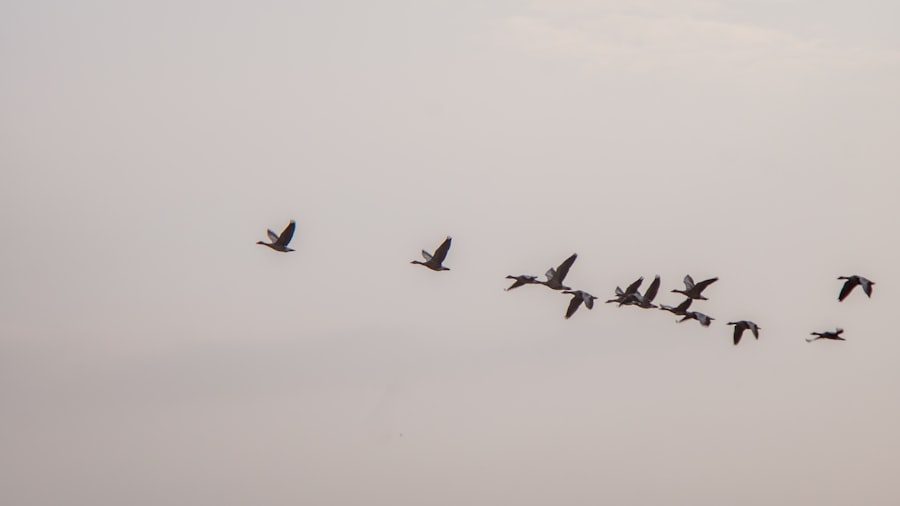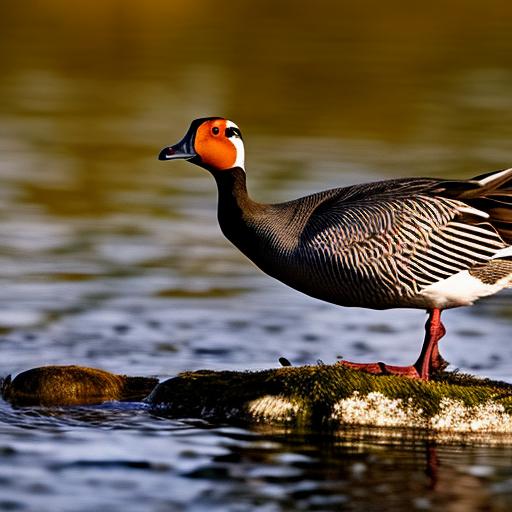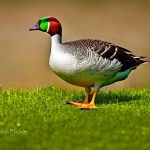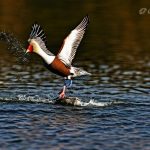Geese decoys are lifelike replicas of geese that are used to deter real geese from an area. They are typically made from durable materials such as plastic or foam and are designed to mimic the appearance and behavior of real geese. Geese decoys work by creating the illusion of a flock of geese, which can intimidate and deter real geese from landing or nesting in a particular area.
Key Takeaways
- Geese decoys are a useful tool for controlling geese populations.
- Decoys work by tricking geese into thinking an area is already occupied by other geese.
- There are several types of decoys available, including full-body, shell, and silhouette decoys.
- Advantages of using decoys for geese control include their effectiveness, affordability, and ease of use.
- When choosing geese decoys, factors to consider include the type of decoy, the number needed, and the location of placement.
How Decoys Help Keep Geese Away
Geese are social animals that prefer to be in the company of other geese. When they see a flock of decoys, they perceive it as a potential threat or competition for resources such as food and nesting sites. This can cause them to avoid the area altogether and seek out a different location that is perceived as safer and less crowded.
In addition to the visual deterrent, decoys also have a psychological effect on geese. When geese see a flock of decoys, they may interpret it as a sign that the area is already occupied by other geese. This can trigger their instinctual behavior to avoid areas that are already claimed by other geese, as they do not want to risk confrontation or competition.
Types of Decoys for Geese Control
There are several types of decoys available for geese control, each with its own pros and cons. The most common types include silhouette decoys, full-body decoys, and motion decoys.
Silhouette decoys are flat, two-dimensional cutouts that are typically made from lightweight materials such as plastic or cardboard. They are easy to transport and set up, making them a popular choice for hunters and farmers. However, they may not be as effective in windy conditions, as they can easily blow over or become damaged.
Full-body decoys are three-dimensional replicas of geese that are designed to look and feel like real birds. They are typically made from durable materials such as foam or rubber and are weighted to prevent them from tipping over in windy conditions. Full-body decoys are more expensive and bulkier to transport and set up, but they provide a more realistic appearance that can be more effective in deterring geese.
Motion decoys are decoys that have moving parts, such as flapping wings or bobbing heads. These decoys are designed to mimic the natural movements of real geese and can be highly effective in attracting and deterring geese. However, motion decoys are typically more expensive and require batteries or other power sources to operate.
Advantages of Using Decoys for Geese Control
Using decoys for geese control offers several advantages over other methods. First and foremost, decoys are a humane solution that does not harm or kill the geese. Instead, they rely on the natural instincts and behaviors of the geese to deter them from an area. This makes decoys a more ethical choice for those who want to control geese populations without resorting to lethal methods.
Decoys are also an eco-friendly solution for geese control. Unlike chemical repellents or traps, which can harm other wildlife or contaminate the environment, decoys have no negative impact on the ecosystem. They simply create a visual deterrent that encourages geese to find a different location.
Furthermore, decoys are a cost-effective solution for geese control. While there may be an initial investment in purchasing the decoys, they can be used repeatedly for many seasons with proper care and maintenance. This makes them a more affordable option compared to hiring professional pest control services or investing in expensive equipment.
Factors to Consider When Choosing Geese Decoys
When choosing geese decoys, there are several factors that should be considered to ensure their effectiveness. One important factor is the realism of the decoys. Geese are intelligent animals and can quickly recognize decoys that do not look or behave like real geese. It is important to choose decoys that are lifelike in appearance and have realistic movements, such as flapping wings or bobbing heads.
Another factor to consider is the number of decoys. Geese are social animals that prefer to be in large flocks. To create an effective deterrent, it is recommended to use a minimum of six to eight decoys. However, using more decoys can increase the effectiveness, especially in areas with high geese populations.
The placement and spacing of the decoys is also crucial for their effectiveness. Decoys should be placed in a realistic formation, such as a V-shape or a U-shape, to mimic the natural behavior of geese. They should also be spaced out evenly to create the illusion of a larger flock.
How to Set Up Geese Decoys for Maximum Effectiveness

To set up geese decoys for maximum effectiveness, follow these steps:
1. Choose a location: Select an area where geese are causing problems, such as a lawn or pond. Make sure the area has enough open space for the decoys to be visible.
2. Determine the number of decoys: Decide how many decoys you will need based on the size of the area and the number of geese you want to deter. As mentioned earlier, a minimum of six to eight decoys is recommended.
3. Set up the decoys: Place the decoys in a realistic formation, such as a V-shape or a U-shape, with equal spacing between each decoy. Make sure they are facing into the wind, as this is the direction that geese typically approach from.
4. Add motion decoys: If you have motion decoys, place them strategically among the static decoys to create a more realistic appearance. Make sure the motion decoys are positioned in a way that allows them to move freely without getting tangled.
5. Monitor and adjust: Regularly monitor the area to see if the decoys are effectively deterring the geese. If not, try adjusting the placement or spacing of the decoys to create a more convincing illusion.
Tips for Maintaining Geese Decoys
Proper maintenance and care are essential for keeping geese decoys in good condition and maximizing their effectiveness. Here are some tips for maintaining geese decoys:
1. Clean regularly: Clean the decoys regularly to remove dirt, dust, and debris that can accumulate on their surfaces. Use a mild detergent and warm water to gently scrub the decoys, then rinse thoroughly and allow them to air dry before storing.
2. Repair any damage: Inspect the decoys regularly for any signs of damage, such as cracks or tears. Repair any damage promptly using appropriate materials, such as glue or patching kits designed for the specific type of decoy.
3. Store properly: When not in use, store the decoys in a cool, dry place to prevent damage from moisture or extreme temperatures. Avoid storing them in direct sunlight, as this can cause fading or warping.
4. Replace worn-out decoys: Over time, decoys may become worn out or damaged beyond repair. It is important to replace these decoys to maintain the effectiveness of your geese control efforts.
Common Mistakes to Avoid When Using Geese Decoys
While geese decoys can be highly effective in deterring geese, there are some common mistakes that people make that can reduce their effectiveness. Here are some mistakes to avoid:
1. Using too few decoys: Using too few decoys can make the illusion less convincing and may not effectively deter geese. It is important to use a sufficient number of decoys to create the appearance of a large flock.
2. Placing decoys too close together: Placing decoys too close together can make the formation look unnatural and may not effectively deter geese. It is important to space the decoys out evenly to create a realistic appearance.
3. Neglecting maintenance: Neglecting to clean and maintain the decoys can reduce their effectiveness and shorten their lifespan. Regular cleaning and proper storage are essential for keeping the decoys in good condition.
4. Using unrealistic decoys: Using decoys that do not look or behave like real geese can quickly be recognized by geese and may not effectively deter them. It is important to choose decoys that are lifelike in appearance and have realistic movements.
Other Methods for Geese Control
While geese decoys can be an effective solution for geese control, there are other methods available as well. Some common methods include:
1. Chemical repellents: Chemical repellents can be used to deter geese by creating an unpleasant taste or smell in the area. However, these repellents can be harmful to other wildlife and may require frequent reapplication.
2. Noise deterrents: Noise deterrents, such as propane cannons or ultrasonic devices, can be used to scare geese away from an area. However, these devices can be disruptive to humans and may not be effective in all situations.
3. Habitat modification: Modifying the habitat to make it less attractive to geese can also be an effective method of control. This can include removing food sources, installing fencing or netting, or using landscaping techniques that discourage geese from landing or nesting.
Geese Decoys as an Effective Solution for Geese Control
In conclusion, geese decoys are a highly effective solution for geese control that offers several advantages over other methods. They work by creating the illusion of a flock of geese, which can intimidate and deter real geese from an area. Decoys are a humane and eco-friendly solution that does not harm or kill the geese, and they can be used repeatedly for many seasons with proper care and maintenance.
When choosing decoys, it is important to consider factors such as realism, number of decoys, and placement. Proper setup and maintenance are crucial for maximizing the effectiveness of decoys. It is also important to avoid common mistakes, such as using too few decoys or neglecting maintenance.
While geese decoys are a highly effective solution, there are other methods available as well. It is important to choose the method that best suits your specific needs and circumstances. Whether you choose decoys or another method, taking action to control geese populations can help protect your property and maintain a healthy environment.
If you’re interested in learning more about effective strategies to keep geese away, you might find this article on “How Many Eggs Do Geese Lay?” quite informative. Understanding the breeding habits of geese can help you devise better methods to deter them from your property. Check out the article on Poultry Wizard’s website to gain valuable insights into geese breeding patterns and how it relates to managing their presence.
FAQs
What are decoys?
Decoys are objects that are designed to imitate the appearance and behavior of real animals. They are commonly used in hunting and wildlife management to attract or repel certain species.
How do decoys keep geese away?
Decoys can be used to keep geese away by creating the illusion of a predator or danger in the area. Geese are naturally wary of predators, so the presence of a decoy can deter them from landing or feeding in a particular area.
What types of decoys are effective for keeping geese away?
Decoys that resemble natural predators of geese, such as coyotes, foxes, and eagles, are often effective at keeping geese away. Additionally, decoys that mimic the appearance of other geese can be used to create the impression that the area is already occupied.
Are there any other methods for keeping geese away?
Other methods for keeping geese away include using noise deterrents, such as propane cannons or bird distress calls, and physical barriers, such as fencing or netting. However, decoys are often a more cost-effective and low-maintenance option.
Meet Walter, the feathered-friend fanatic of Florida! Nestled in the sunshine state, Walter struts through life with his feathered companions, clucking his way to happiness. With a coop that’s fancier than a five-star hotel, he’s the Don Juan of the chicken world. When he’s not teaching his hens to do the cha-cha, you’ll find him in a heated debate with his prized rooster, Sir Clucks-a-Lot. Walter’s poultry passion is no yolk; he’s the sunny-side-up guy you never knew you needed in your flock of friends!







